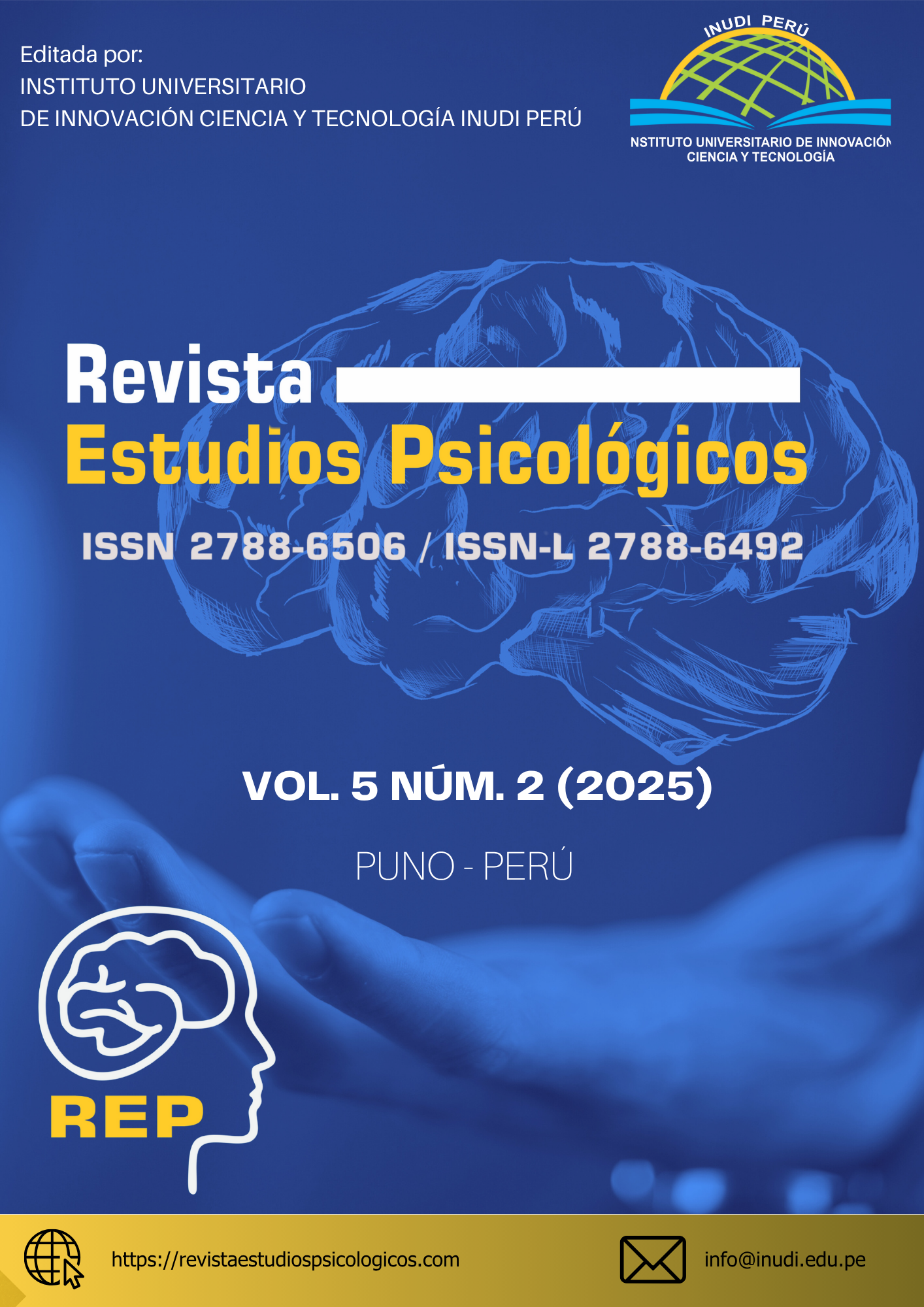Online sexual harassment of minors: similarities and differences in recidivism and criminal history compared to other child sexual offenders
DOI:
https://doi.org/10.35622/Keywords:
child sexual abuse, harassment, crime, pornography, information technologyAbstract
Requests of a sexual nature directed at minors through the internet, a phenomenon identified as online sexual harassment of minors, have shown in recent years a steadily increasing trend in the criminal statistics recorded in Spain. The main objective of the present study is to describe and compare the criminal history and recidivism of individuals arrested for online sexual harassment of minors, child sexual abuse, and child pornography, based on police records, in order to identify differential patterns of criminal behavior. To this end, information on criminal history and recidivism was extracted from three different samples of individuals arrested for offenses of online sexual harassment of minors, child pornography, and child sexual abuse. This information, initially obtained from police reports, was expanded with data from police arrest databases and subsequently subjected to statistical analysis. The methodology follows a quantitative approach with a non-experimental, exploratory, descriptive, and comparative design. The results show that both the rate of recidivism and the prevalence of previous criminal history are higher in offenses related to online sexual harassment of minors than in the other two samples. The criminal history involving other sexual offenses is also recurrently higher. From these findings, it can be inferred that the profile of the online sexual harasser of minors is much more similar to that of child sexual abuse offenders than to that of child pornography offenders. Consequently, both police response and reintegration strategies should be adapted to such characteristics.
Estadísticas del Artículo
References
Aebi, M., Plattner, B., Ernest, M., Kaszynski, K., y Bessler, C. (2014). Criminal history and future offending of juveniles convicted of the possession of child pornography. Sexual Abuse, 26(4), 375–390. https://doi.org/10.1177/1079063213492344
Babchishin, K. M., Hanson, R. K., y Hermann, C. A. (2011). The characteristics of online sex offenders: A meta-analysis. Sexual Abuse: A Journal of Research and Treatment, 23, 92-123. https://doi.org/10.1177/1079063210370708
Bartosh, D.L., Garby, T, Lewis, D., y Gray, S. (2003). Differences in the predictive validity of actuarial risk assessments in relation to sex offender type. International Journal of Offender Therapy and Comparative Criminology, 47, 422438. https://doi.org/10.1177/0306624x03253850
Bergen, E., Davidson J., Schulz A., Schuhmann P., Johansson A., Santtila, P, y Jearn, P. (2014). The Effects of Using Identity Deception and Suggesting Secrecy on the Outcomes of Adult-Adult and Adult-Child or -Adolescent Online Sexual Interactions. Victims & Offenders 9(3), 276-298. https://doi.org/10.1080/15564886.2013.873750
Brouillette-Alarie, S. Proulx, J., Hanson, R.K. (2018). Three central dimensions of sexual recidivism risk: Understanding the latent constructs of Static-99R and Static-2002R. Sexual Abuse 30 (6), 676-704. https://doi.org/10.1177/1079063217691965
Creswell, J. W., & Creswell, J. D. (2018). Research design: Qualitative, quantitative, and mixed methods approaches (5th ed.). SAGE Publications.
De Santisteban, P., Gámez-Guadix, M. (2018). Prevalence and Risk Factors Among Minors for Online Sexual Solicitations and Interactions With Adults. The Journal of Sex Research. 55 (7), 939-950. https://doi.org/10.1080/00224499.2017.1386763
Dowling, C., Boxall, H.P., Kamarah L., Cameron C. (2021). Patterns and predictors of reoffending among child sexual offenders: A rapid evidence assessment. Trends and Issues in Crime and Criminal Justice, 632, 1-19. https://doi.org/10.52922/ti78306
Eke, A. W., Helmus, L. M., y Seto, M. C. (2018). A validation study of the child pornography offender risk tool (CPORT). Sexual Abuse. https://doi.org/10.1177/1079063218762434
Elliott, I. A., Martin, E. (2023). Post-release reoffending outcomes for individuals with offence-related sexual paraphilias. An exploratory risk-band analysis. Ministry of Justice Analytical Series. 2023. http://dx.doi.org/10.13140/RG.2.2.34751.18089
Endrass, J., Urbaniok, F., Hammermeister, L. C., Benz, C., Elbert, T., Laubacher, A., y Rossegger, A. (2009). The consumption of Internet CP and violent and sex offending. BMC Psychiatry, 9, 43. https://doi.org/10.1186/1471-244x-9-43
Fanniff, A. M., Schubert, C. A., Mulvey, E. P., Iselin, A. M. R., y Piquero, A. R. (2017). Risk and outcomes: Are adolescents charged with sex offenses different from other adolescent offenders? Journal of Youth and Adolescence, 46, 1394-1423. https://doi.org/10.1007/s10964-016-0536-9
Goller, A., Jones, R., Dittmann, V., Taylor, P., y Graf, M. (2016). Criminal recidivism of illegal pornography offenders in the overall population—A national cohort study of 4612 offenders in Switzerland. Advances in Applied Sociology, 6(2), 48–56. https://doi.org/10.4236/aasoci.2016.62005
Grünfeld, B. y Noreik, K. (1986). Recidivism among sex offenders: A follow-up study of 541 Norwegian sex offenders. International Journal of Law and Psychiatry, 9, 95-102. https://doi.org/10.1016/0160-2527(86)90019-1
Hanson, R. K. (2022). Prediction statistics for psychological assessment. American Psychological Association. https://psycnet.apa.org/doi/10.1037/0000275-000
Hanson, K. L., y Bussière, M. T. (1998). Predicting relapse: A meta-analysis of sexual offender recidivism studies. Journal of Consulting and Clinical Psychology, 8, 190–197. https://doi.org/10.1037/0022-006x.66.2.348
Hanson, R. K., Lee, S. C., & Thornton, D. (2022). Long Term Recidivism Rates Among Individuals at High Risk to Sexually Reoffend. Sexual Abuse, 36(1), 3-32. https://doi.org/10.1177/10790632221139166
Harris, A., y Hanson, R. K. (2004). Sex offender recidivism: A simple question (Cat. No. PS3-1/2004-2E). Public Safety and Emergency Preparedness Canada. https://www.publicsafety.gc.ca/cnt/rsrcs/pblctns/sx-ffndr-rcdvsm/index-en.aspx
Henshaw, M., Ogloff, J. R. P. y Clough, J. A. (2017). Looking beyond the screen: A critical review of the literature on the online child pornography offender. Sexual Abuse, 29(5), 416–445. https://doi.org/10.1177/1079063215603690
Hernández-Sampieri, R., Fernández-Collado, C., & Baptista, P. (2014). Metodología de la investigación (6.ª ed.). McGraw-Hill.
Kerlinger, F. N., & Lee, H. B. (2002). Foundations of behavioral research (4th ed.). Wadsworth.
Kloess, J. A., Beech, A. R. y Harkins, L. (2014). Online Child Sexual Exploitation: Prevalence, Process, and Offender Characteristics. Trauma, Violence & Abuse, 15(2), 126-139. https://doi.org/10.1177/1524838013511543
Langan, P. A., & Levin, D. J. (2002). Recidivism of prisoners released in 1994 (NCJ 193427). U.S. Department of Justice, Bureau of Justice Statistics. https://bjs.ojp.gov/content/pub/pdf/rpr94.pdf
Ley Orgánica 1/2015 (30 de marzo de 2015). Por la que se modifica la Ley Orgánica 10/1995, de 23 de noviembre, del Código Penal. Boletín Oficial del Estado, 77, 27061-27176. https://www.boe.es/diario_boe/txt.php?id=BOE-A-2015-3439
Lovins, B., Lowencamp, C. T., y Latessa, E. (2009). Applying the risk principle to sex offenders: Can treatment make some sex offenders worse? The Prison Journal, 89, 344-357. https://doi.org/10.1177/0032885509339509
Lowencamp, C. T., Latessa, E., y Holsinger, A. (2006). The risk principle in action: What havewe learned from 13,676 offenders and 97 correctional programs? Crime & Delinquency, 51, 1-17. https://doi.org/10.1177/0011128705281747
Montero, I., & León, O. G. (2007). A guide for naming research studies in Psychology. International Journal of Clinical and Health Psychology, 7(3), 847–862.
O’Connell, R. (2003). A typology of cyber sexploitation and online grooming practices. Preston, England: University of Central Lancashire. https://image.guardian.co.uk/sys-files/Society/documents/2003/07/17/Groomingreport.pdf
Owens, J. N., Eakin, J. D., Hoffer, T., Muirhead, Y., Lynn, J. y Shelton, E. (2016). Investigative aspects of crossover offending from a sample of FBI online child sexual exploitation cases. Aggression and Violent Behavior, 30, 3–14. https://doi.org/10.1016/j.avb.2016.07.001
Ozkan, T., Clipper, S.T., Piquero A.R., Baglivio, M., Wolff, M (2019). Predicting Sexual Recidivism. Sexual Abuse, 1– 25. https://doi.org/10.1177/1079063219852944
Piquero, A. R., Farrington, D. P., Jennings, W. G., Diamond, B. y Craig, J. (2012). Sex offenders and sex offending in the Cambridge study in delinquent development: Prevalence, frequency, specialization, recidivism, and (dis)continuity over the life-course. Journal of Crime and Justice, 35, 412-426. https://doi.org/10.1080/0735648x.2012.688527
Quinsey, V. L., Rice, M. E., y Harris, G. T. (1995). Actuarial prediction of sexual recidivism. Journal of Interpersonal Violence, 10, 85-105. https://doi.org/10.1177/088626095010001006
Ringenberg, T. R., Seigfried-Spellar, K. C., Rayz, J. M. y Rogers, M. K. (2022). A scoping review of child grooming strategies: pre-and post-internet. Child Abuse & Neglect, 123, 105392. https://doi.org/10.1016/j.chiabu.2021.105392
Schmucker, M. y Lösel, F. (2015). The effects of sexual offender treatment on recidivism: An international meta-analysis of sound quality evaluations. Journal of Experimental Criminology, 11(4), 597–630. https://psycnet.apa.org/doi/10.1007/s11292-015-9241-z
Seto, M. C. y Eke, A. W. (2015). Predicting recidivism among adult male child pornography offenders: Development of the Child Pornography Offender Risk Tool (CPORT). Law and Human Behavior, 39(4), 416–429. https://doi.org/10.1037/lhb0000128
Seto, M. C. y Hanson, R. K. (2011). Introduction to Special Issue on Internet-facilitated sexual offending. Sexual Abuse: A Journal of Research and Treatment, 23, 3–6. https://doi:10.1177/1079063211399295
Seto, M. C., Hanson, R. K. y Babchishin, K. M. (2011). Contact sexual offending by men with online sexual offenses. Sexual Abuse, 23(1), 124–145.
Soldino, V., Carbonell-Vayá E.J, Seigfried-Spellar, K.C. (2019). Criminological differences between child pornography offenders arrested in Spain. Child Abuse Neglect. https://doi.org/10.1016/j.chiabu.2019.104178
Tanner, J., y Brake, S. (2013). Exploring Sex Offender Grooming. https://kbsolutions.com/Grooming.pdf
Ward, T., Polaschek, D. y Beech, A. R. (2006). Theories of Sexual Offending. Chichester: John Willey & Sons. http://dx.doi.org/10.1002/9780470713648
Whittle, H. C., Hamilton-Giachritsis, C. E. y Beech, A. R. (2014). In their own words: Young peoples’ vulnerabilities to being groomed and sexually abused online. Psychology, 5, 1185–1196. https://doi.org/10.4236/psych.2014.510131
Winters, G. M., Kaylor, L. E., & Jeglic, E. L. (2021). Toward a Universal Definition of Child Sexual Grooming. Deviant Behavior, 43(8), 926–938. https://doi.org/10.1080/01639625.2021.1941427
Young, K. (2005). Profiling online sex offenders, cyber-predators, and pedophiles. Journal of Behavioral Profiling, 5(1), 1–18. https://netaddiction.com/articles/Pedophile.pdf
Downloads
Published
Issue
Section
License
Copyright (c) 2025 Israel Díaz, Marta Vizcaíno (Autor/a)

This work is licensed under a Creative Commons Attribution 4.0 International License.
La Revista Estudios Psicológicos del Instituto Universitario de Innovación Ciencia y Tecnología Inudi Perú está sobre una licencia internacional Creative Commons Atribución 4.0. Lo que permite que los archivos sean de libre acceso y distribuidos libremente.
LOS AUTORES RETIENEN SUS DERECHOS:
- Los autores retienen sus derechos de marca y patente, y tambien sobre cualquier proceso o procedimiento descrito en el artículo.
- Los autores retienen el derecho de compartir, copiar, distribuir, ejecutar y comunicar públicamente el artículo publicado en la Revista Estudios Psicológicos (por ejemplo, colocarlo en un repositorio institucional o publicarlo en un libro), con un reconocimiento de su publicación inicial.
- Los autores retienen el derecho a hacer una posterior publicación de su trabajo, de utilizar el artículo o cualquier parte de aquel (por ejemplo: una compilación de sus trabajos, notas para conferencias, tesis, o para un libro), siempre que indiquen la fuente de publicación (autores del trabajo, revista, volumen, número y fecha).



















